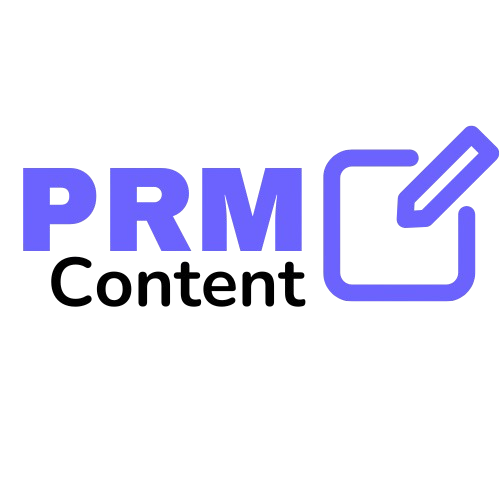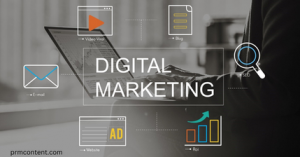Successful Marketing Ads For Your Business
We are surrounded by ads. These promotions are all part of marketing campaigns, strategic efforts designed to promote a brand or business. Marketing campaigns have become essential for businesses to showcase their services and products in today’s competitive landscape.
Memorable slogans don’t just stick in your mind, they can reshape your perception of the product being promoted. While an effective ad convinces you to make a purchase, a truly impactful campaign embeds a catchphrase into everyday conversation, becoming a part of popular culture.
This is the key objective for marketers when crafting their ad campaigns.The following 3 successful campaigns show just how vital smart slogans are in building strong brand recognition.
Top 3 Successful Marketing Ads Compaigns
- Nike
- McDonald’s
- Pepsi
1.Nike: “Just Do It” Compaign
Nike introduced the iconic slogan “Just Do It” in 1988 during a time of financial challenges. This straightforward phrase has since become synonymous with the brand and its athletic products. It’s an ideal fit for a company selling sportswear, as it evokes a sense of courage and motivates people to push themselves. The slogan has played a significant role in Nike’s success over the years and is now seen as a key factor in the brand’s rise to prominence.
Nike’s marketing campaign achieved remarkable success by creating a powerful emotional connection with its audience. This was accomplished by weaving stories that resonated with the company’s core values of motivation, inspiration, and healthy living.
2.McDonald’s: “You Deserve a Break Today” Compaign
In the early 1970s, McDonald’s launched its iconic slogan, “You Deserve a Break Today,” which would go on to become one of the most memorable and influential advertising campaigns in history. The message resonated deeply with consumers by offering more than just food—it promised a moment of relaxation and reward in the midst of a busy day.
The slogan “You Deserve a Break Today” was designed to connect emotionally with customers. It wasn’t just about the food; it was about the experience. At a time when fast food was becoming a cultural phenomenon, McDonald’s positioned itself as a place where people could take a break from their hectic lives and enjoy a simple, affordable meal. This emotional appeal made customers feel valued and appreciated, turning a meal at McDonald’s into a well-earned reward.
3.Pepsi: The “Is Pepsi OK?” Campaign
Pepsi has long been one of the world’s most recognizable brands, often competing directly with its main rival, Coca-Cola. One of its more memorable and successful campaigns was the “Is Pepsi OK?” campaign, which cleverly embraced a challenge many brands might shy away from.
Pepsi’s campaign succeeded by cleverly tapping into a common customer experience. Marketers recognized that the question “Is Pepsi OK?” is a frequent occurrence in restaurants. By aligning this everyday scenario with their positive campaign messaging, Pepsi created a powerful connection in consumers’ minds. Every time a customer heard the question, they were subconsciously reminded of the upbeat and enjoyable commercials they had seen. This self-awareness allowed Pepsi to leverage a familiar situation to reinforce their brand’s positive image.
Steps to Create a Successful Marketing Ads For Your Business
Creating successful marketing ads is essential for any business looking to build brand awareness, attract new customers, and drive sales. Whether you’re a small business or a large corporation, the right marketing ads can make all the difference. But what exactly makes an ad successful, and how can you ensure that your ads stand out in today’s crowded marketplace?
Here are some guidelines for creating a successful marketing campaign:
1.Understand Your Audience:
The first step to creating a successful marketing ad is understanding your target audience. You need to know who you’re talking to so you can speak their language, address their needs, and provide solutions to their problems. Here’s how to get started:
- Identify your ideal customer: Consider demographics like age, gender, income level, and location.
- Understand their pain points: What challenges or problems are they facing that your product or service can solve?
- Craft a message that resonates: Make sure your ad speaks directly to your audience’s emotions and needs.
2.Allocate Your Marketing Budget Wisely
A well-funded marketing campaign is essential for achieving your goals. Best practices suggest businesses allocate between 2% and 20% of their sales for marketing.
If you need additional funds, explore available financial resources. When setting your budget, consider factors such as your advertising goals, business size, industry, and current business stage.
3.Create a Strong and Clear Message
A successful ad communicates its message quickly and effectively. You only have a few seconds to grab someone’s attention, so your ad needs to be clear and concise. Here’s how to do it:
- Focus on benefits, not just features: Instead of listing the features of your product, explain how it can improve the lives of your customers.
- Keep it simple: Avoid overcomplicating your message. Make sure it’s easy to understand and digest at a glance.
- Use a powerful call-to-action (CTA): Guide your audience to take the next step, whether that’s making a purchase, signing up, or visiting your website.
4.Use Engaging Visuals
Visuals play a huge role in grabbing attention and making your ad stand out. Whether you’re using images, graphics, or videos, the right visuals can make your ad memorable and impactful. Here are some tips:
- High-quality visuals: Use professional and eye-catching images or videos that reflect your brand’s style.
- Consistency with branding: Ensure that your visuals align with your brand colors, fonts, and overall aesthetic.
Evoke emotion: Choose visuals that stir up emotions, whether it’s excitement, joy, or inspiration, to connect with your audience on a deeper level.
5.Connect With Your Audience Emotionally
Great ads don’t just inform—they evoke emotions. People are more likely to remember an ad that made them feel something, whether it’s happiness, excitement, or even nostalgia. Think about how your product or service can improve your customer’s life, and use that to create an emotional connection through your ad.
For example:
- A clothing brand might create ads that inspire confidence and self-expression.
- A travel agency could tap into the emotions of adventure and freedom.
Tapping into the right emotions can make your ad more memorable and persuasive.
6.Highlight Social Proof
People often rely on the experiences of others when making decisions, making social proof a valuable tool in advertising. Include customer testimonials, user-generated content, or reviews in your ads to build trust with potential customers. Showing that others have had a positive experience with your product or service can make new customers feel more confident in their decision to buy from you.
Some ways to use social proof in your ads include:
- Featuring testimonials from satisfied customers.
- Showcasing ratings or reviews.
- Highlighting celebrity endorsements or partnerships with trusted brands.
7.Build Up Your Media Strategy
In today’s digital age, a strong media strategy is essential for any business aiming to grow its brand and engage with its audience effectively. Whether you’re working on social media, traditional media, or digital advertising, having a clear and structured approach is key to reaching your target market and achieving your business goals.
8.Choose the Right Platforms
To build media strategy, you must need to choose right Platforms.Where you place your ads is just as important as the ad content itself. Your audience’s age, interests, and behaviors should guide your platform choices. Here’s a breakdown of popular advertising platforms and when to use them:
- Social Media (Facebook, Instagram, TikTok): Ideal for targeting specific demographics with visually-driven content. Excellent for building brand recognition and connecting with younger audiences.
- Google Ads: Perfect for capturing intent-based searches. If someone is searching for a product or service like yours, Google Ads can help you show up right when they’re ready to buy.
- YouTube: Best for video ads that can engage audiences through storytelling or demos.
- Email Marketing: Use email ads to reach existing customers with promotions and updates.
- Traditional Media (TV, Radio, Print): These platforms are still effective for reaching local or older audiences.
9.Test and Optimize
One of the best ways to ensure your marketing ads are successful is by testing different variations and optimizing based on the results. A/B testing enables you to compare different headlines, visuals, CTAs, and ad formats to determine which elements most effectively resonate with your audience.
10.Track Performance and Adjust
Finally, successful ads are not a one-time effort. After your ads are live, it’s important to monitor their performance and make adjustments as needed. Use analytics tools like Google Analytics, Facebook Ads Manager, or the platform’s own reporting features to track:
- Click-through rates (CTR): How many people clicked on your ad?
- Conversion rates: How many people took the desired action after seeing your ad?
- Return on investment (ROI): Are you seeing a profitable return from your ad spend?
By continually tracking your ads’ performance, you can identify areas for improvement and ensure your marketing efforts are always optimized for success.

